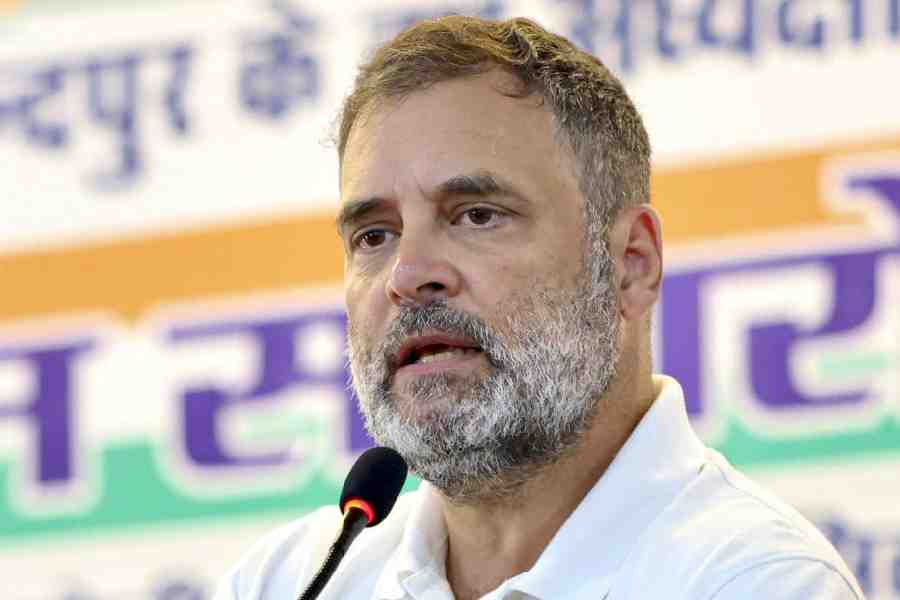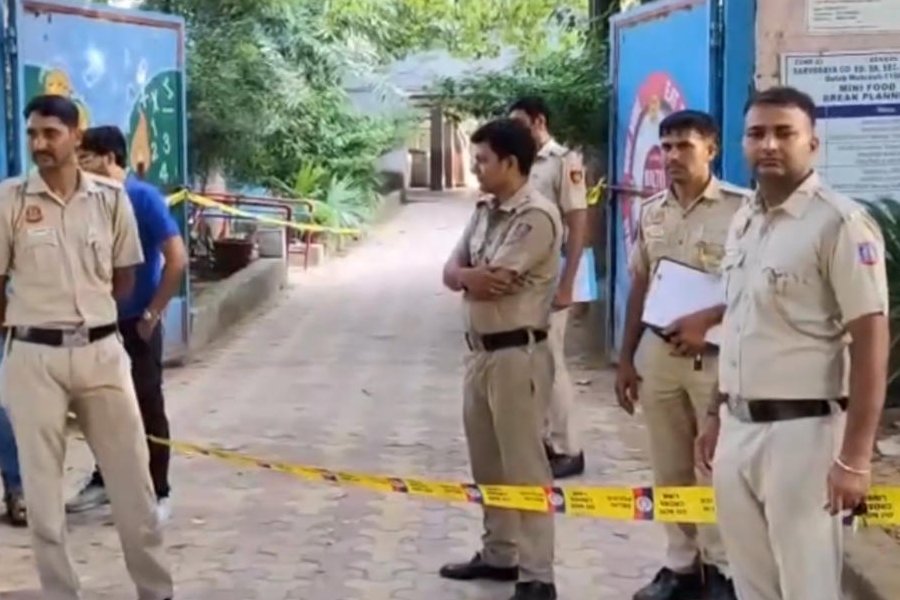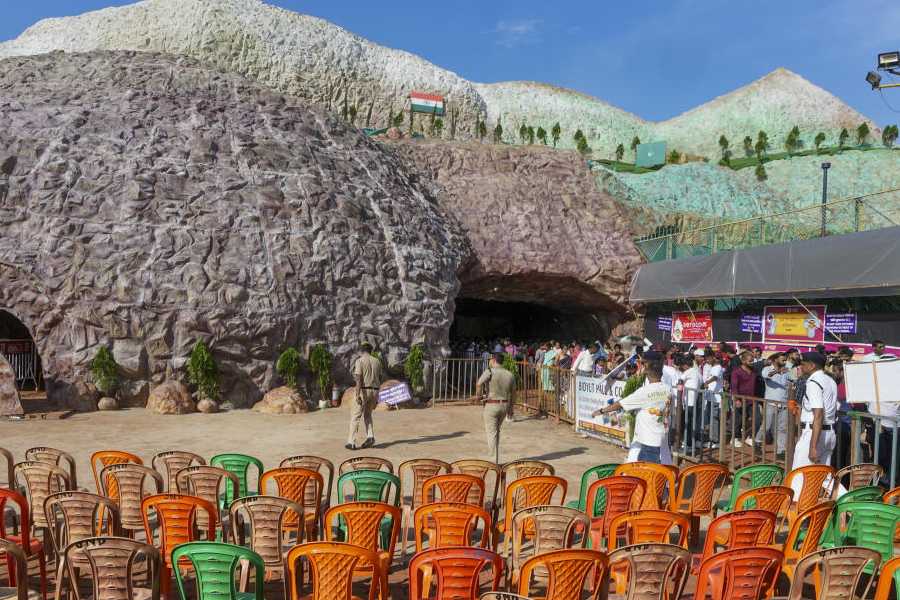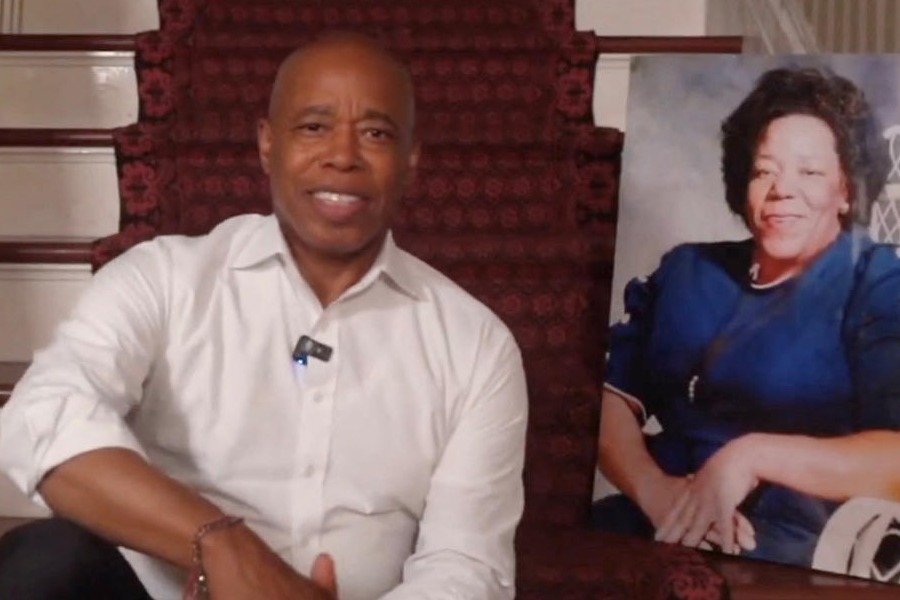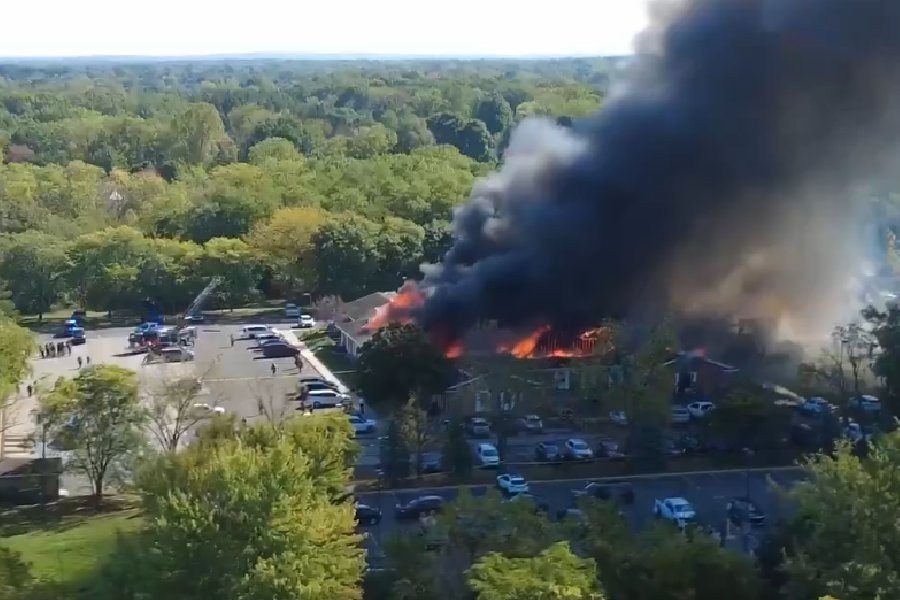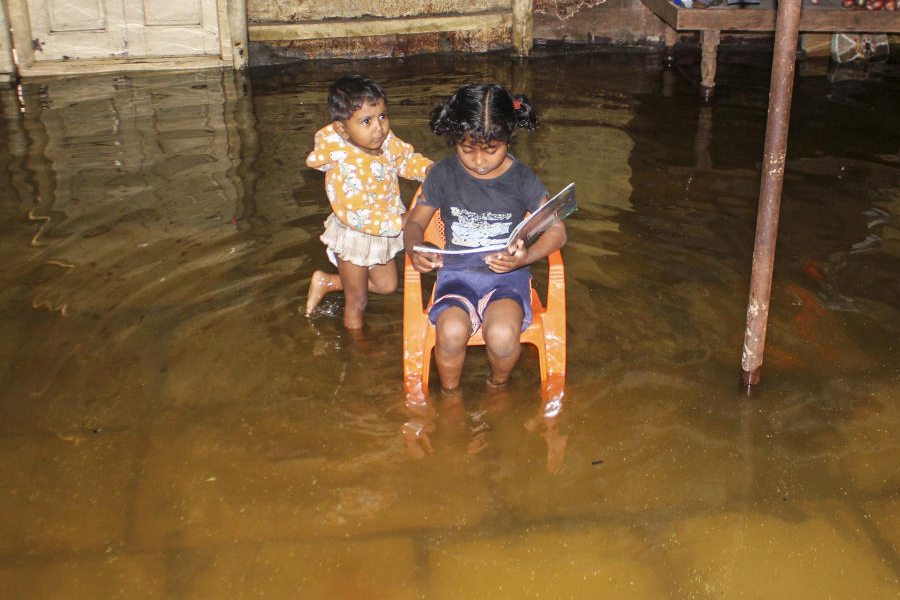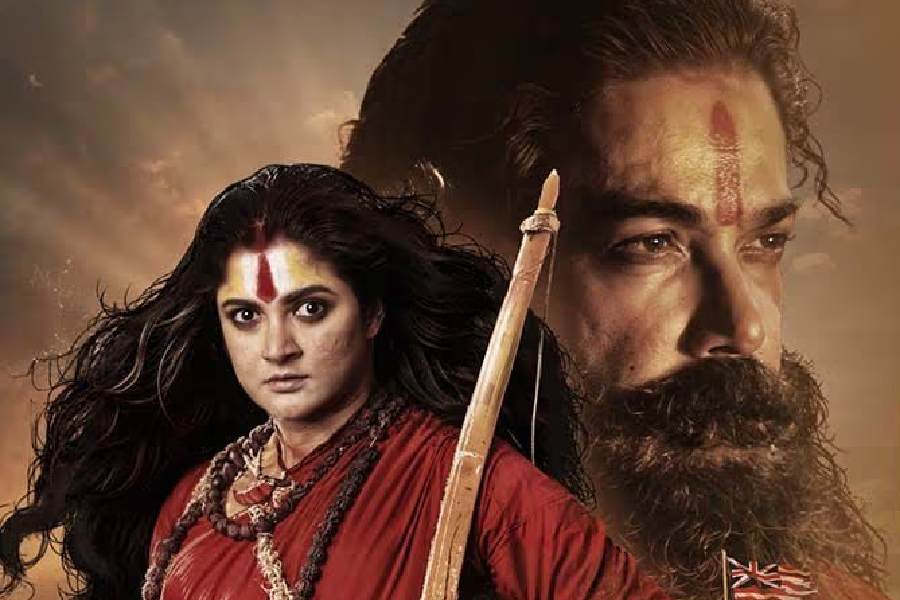 |
Poonam, a graceful and virtuous small-town girl from Madhupur, is set to marry Prem, soft spoken, well educated and the son of a reputed Delhi businessman, thanks to some nifty matchmaking by one Bhagatji. The young couple, who have never met before, find themselves in an odd situation, but nevertheless go ahead with the decision arrived at by the two families, and agree upon giving themselves six months to find out more about each other and prepare for a marriage which both see as an institution founded on the pillars of unconditional love.
What happens next isn’t something Rajshri Productions is willing to reveal yet — it would rather have you find out when its latest celluloid release, Vivah, hits the screens some time next month. But if you’re on the verge of thinking that this is yet another one of those family staples from the Rajshri stable, listen to what film critic Komal Nahata has to say. “The film possibly seeks to underline the importance of arranged marriages in today’s society, not just dwell on the concept of an arranged match. It seeks to redefine and refurbish the whole affair in a modern form,” he observes.
That reel life doesn’t always reflect real life is something that needs no mentioning. But Vivah, in its own small way, probably indicates a noticeable shift in the paradigm of arranged marriages, one of the most predominant bastions of Indian society. And the fact that Vivah comes after films such as Salaam Namaste which have gone to the extent of glorifying independent, live-in relationships perhaps alludes to the shift that is becoming more evident by the day. If contemporary trends are an indication, love marriages, the most noticeable socio-cultural revolution to have taken urban India by storm in the past couple of decades, seem to be on the wane. And arranged matches are back, albeit in a trendier package suited to the lives people in Indian cities live today.
Meena Radhakrishna, a sociologist at Delhi University, explains why love marriages were quite the rage in the past few decades. “The generation then was fed on idealism and a feeling of independence and selfhood. Secularity was in, and so was a spirit of nationalism, and the obvious reaction was to challenge the system of patriarchy that was long prevalent in the country. Love was perhaps a category of that greater sensibility, and the youth probably went out of the marriage format to defy it as they were defying everything else,” she says.
The reasons for the return of arranged marriages, however, are varied. Some go for it after having failed in love, some opt for it since the hectic professional lives they lead no longer allow them the privilege of dating. “Typically, those opting for arranged marriages today are aged between 22 and 35, and come from — or above — the middle-class, middle-income group,” says Vibhas Mehta, business head, Shaadi.com. “Most want their families to be involved in the process, a diversion from the immediate past when urban youngsters considered familial assent a mere formality,” he adds.
This, incidentally, is the same group of people who earlier threw social conventions to the wind and went about finding their own partners with untold zest. Arranged marriages, for them, were passé, and finding love in a stranger was the right thing to do. Somewhere, somehow, things seem to have changed.
Sample the following examples. Ashok Mukherjee, father of 26-year-old Sneha Mukherjee, a Delhi-based software professional, is going about posting newspaper ads inviting prospective matches for his daughter. “She has left the task of choosing a groom for her to us, since she is too busy in her professional life,” says Mukherjee. “She has her priorities, though. The groom has to be Bengali, about 5 ft 7 in, and an engineer with a salary running into at least Rs 6 lakh or Rs 7 lakh, since she herself rakes in about Rs 4 lakh annually. She is ready to consider our choice, but maintains that she must have the last word.”
The power of children to take a final call on the issue is one of the major deviations from the arranged marriages of yore. “The involvement of parents and children has increased, and both parties seem to have started respecting each other’s views and opinions,” says Vivek Khare, senior vice-president of the matrimonial portal Jeevansathi. In other words, democratisation is what highlights the arranged marriages of today.
 |
Suchitra Sharma, a Delhi-based professional, is not averse to love marriages, but is finally settling for an arranged match overseen by her parents. “It’s just that I couldn’t find someone of my choice despite looking around,” she says. “I’m 26 now, and not getting any younger. An arranged match, under such circumstances, doesn’t seem to be a bad idea.”
And unlike their predecessors fed on western thoughts, who believed love marriages were better since they fostered greater understanding between couples, today’s generation seems far more considerate about arranged matches. “After all, love marriages don’t always work out, do they?” points out Keya Roy, a 25-year-old Delhi-based professional. “Marriages only click over a period of time; so arranged marriages have an equal chance of clicking as love marriages,” she says.
That is perhaps the reason the number of matrimonial advertisements placed by Indians in various kinds of media is skyrocketing by the day. The new medium, after newspapers, is the Internet, where much of the action takes place today. Shaadi.com currently has about 77 lakh active profiles of members on its website today, with the number going up by a couple of lakh every month. Bharatmatrimony, another of India’s leading matrimonial websites, maintains some 7.5 lakh profiles of prospective grooms and brides on its database. At Jeevansathi, the number is about six lakh, and company spokespersons say they currently happen to be adding close to one lakh new profiles every month.
What is interesting, moreover, is the perceived thought that goes behind arranging marriages. “More and more educated people or professionals, who earlier looked down on arranged marriages, are now opting for them,” says Anindyo Sanyal, founder-director of Relations International, a marriage agency with 16 branches in India and offices in England, Germany, the Netherlands and the US. “If they haven’t found someone, they no longer associate it with failure, but are more realistic about it,” he adds.
Arranging marriages for themselves is currently quite the norm among people working in industries such as software and information technology. Bangalore-based IT giant Wipro has an in-house interactive Intranet site with a separate matrimonial section. “Currently, there are 425 matrimonial advertisements posted on it,” says company spokesperson Arjun Vishwanathan. Tata Consultancy Services, on the other hand, has a system of putting up matrimonial advertisements on bulletin boards outside cafeterias.
And if Indians at home are all getting down to keying out their profiles online, those living abroad are not ready to miss out on the opportunity of going through an arranged marriage either. Take the case of the three doctor sons of a Bengali surgeon living in Canada, all in their mid-thirties and all of who have looked back — through Relations International — to Calcutta to find a bride. Or for that matter, a 33-year-old Bengali woman underwater photographer, living in New Zealand and earning some Rs 18 lakh per month, who is also toeing their line.
Not everyone, though, agrees that arranged marriages are back with a bang. “Essentially, arranged marriages are marriages between families, and since the family is important in India, arranged marriages have been happening all along,” says Mumbai-based psychiatrist Harish Shetty. However, he adds that matchmaking happens only when people want to keep factors such as money, community and clan within reach, or when issues such as business and networking become important. “If these factors become a priority for the upper and the upper-middle class, the number of arranged marriages is likely to increase,” he says.
There are some who see a point there. Sadhna Arya, a Delhi-based academic who was involved with a study on women in Delhi conducted by the NGO Saheli, points to an increased tendency among urban women to bring their sense of religion and community into the public sphere. “Some 65 per cent of Delhi’s women were seen to be following religious practices such as fasts and karva chauths,” says Arya. “To say that these women would prefer arranged marriages to those forged out of love may be true.”
Meena Radhakrishna also thinks that the revival of a Hindu value system could have something to do with the change of trend. Besides, she offers a cynical insight into the issue as well. “Arranged marriages could also come by the new generation as a more comfortable, risk-free option, where the boys could capitalise on their dowry while girls could settle for higher or more prestigious bids,” she says. “Overall, there is so much of general uncertainty all around that today’s youth don’t want to go wrong when it comes to marriage,” she adds.
But then, there are others who say that age-old criteria, such as dowry, religion or caste, don’t matter anymore. “Today’s youth look for lifestyle-based criteria, such as education and profession, interests or even dietary habits,” says Mehta. “Such queries are perhaps made with regard to the fact that today’s lifestyle is a lot more demanding,” he adds.
So is marriage. But whatever be the case, it’s clear that the matchmaker — whether in real or virtual form — is back in business. And if sporadic examples are anything to go by, it may not be only Indians who are indulging in the practice.
Robert Philips, a 37-year-old British graphic designer with an antique business, got married a couple of months ago to a 31-year-old Bengali woman through a matchmaking agency. “In England, seven out of 10 marriages fail, and I wanted to marry a Bengali girl because I thought Bengali women are very loyal,” he observes. Kevin Francisco, another 32-year-old Briton, wanted his marriage arranged with an Indian woman after his first wife left him, since he was looking for “permanence in marriage”.
Falling back on anecdotes, Prince Charles, while being shown around the Teen Murti Bhavan upon one of his visits to Delhi some time ago, chanced to come across a picture of Jawaharlal and Kamla Nehru. Looking at the picture, he reportedly asked if their marriage had been an arranged one. Did arranged marriages work in India, was what the prince was interested in finding out.
Sure, they did. And people from his part of the world have just answered the question for him.


